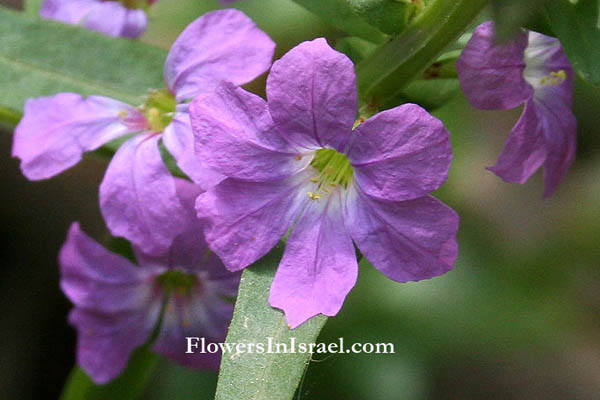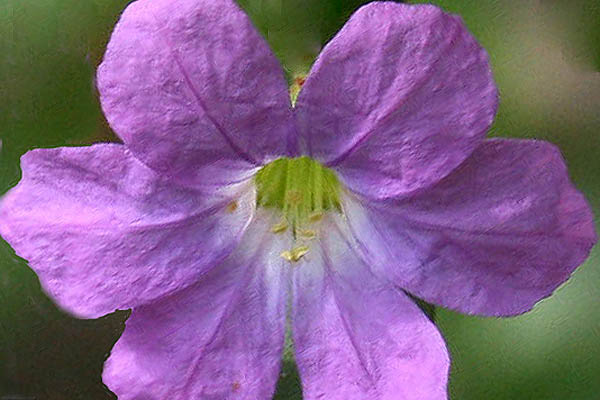False grass-poly, Creeping Loosestrife,
Hebrew: שנית מתפתלת, Arabic: فرندل أسلي
| Scientific name: | Lythrum junceum Banks et Solander | |
| Synonym name: | Lythrum flexuosum auct. non Lagasca, Lythrum graefferi Ten. | |
| Common name: | False grass-poly, Creeping Loosestrife | |
| Hebrew name: | שנית מתפתלת | |
| Arabic name: | فرندل أسلي | |
| Family: | Lythraceae, Loosestrife family, כפריים |

|
| Life form: | Annual | |
| Stems: | 15-35 cm high; stems 15-75 cm long | |
| Leaves: | Alternate, entire, ellips | |
| Inflorescence: | Axillary, 6-merous | |
| Flowers: | Pink, 4-6 petals; stamens 12 | |
| Fruits / pods: | Capsule | |
| Flowering Period: | March, April, May, June, July | |
| Habitat: | Humid habitats | |
| Distribution: | Mediterranean Woodlands and Shrublands, Deserts and extreme deserts | |
| Chorotype: | Mediterranean | |
| Summer shedding: | Ephemeral |

Derivation of the botanical name: Lythrum, Greek lythron, "blood," from the color of the flowers. junceum, rush like. flexuosum, tortuous, zigzag. graefferi, named for John Graeffer; he is said to have been a German of birth, and to have been a pupil of Philip Miller (1691 – 1771). The Hebrew name: שנית, shanit, formed from שני (= scarlet, crimson), with suffix-ית, it; so called in allusion to the color of its flowers.
|